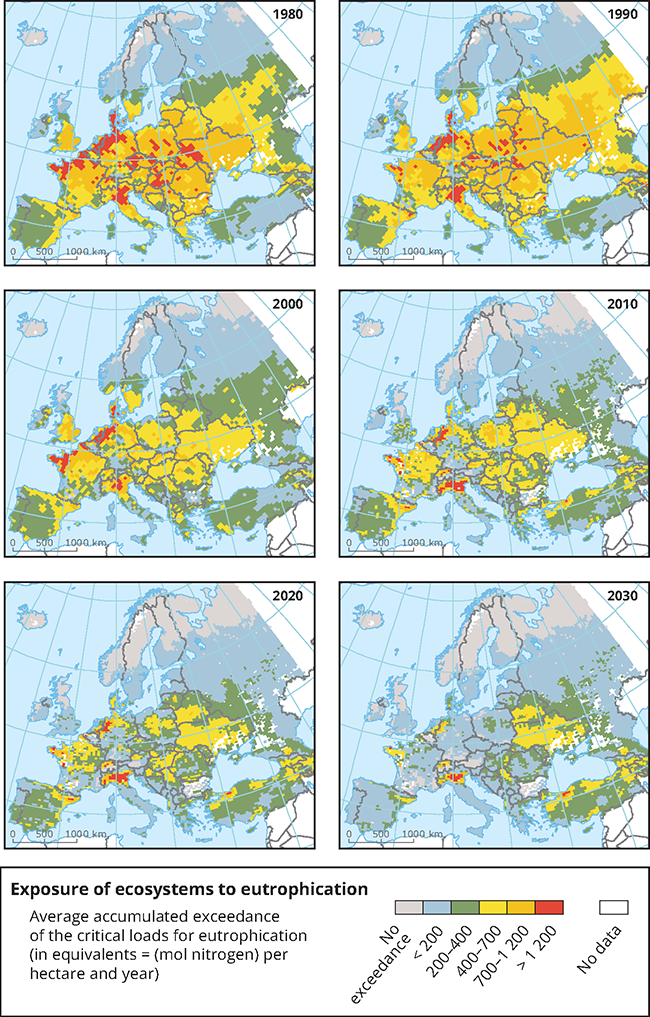Affected areas in Europe
In order to get a picture of the areas that are affected by eutrophication it is not sufficient to determine the quantities deposited - we also need information about the sensitivity of the ecosystems.
But nitrogen has a twofold effect; it causes both eutrophication and acidification. This fact, together with the complexity of the nitrogen cycle, makes it difficult to give unequivocal critical loads for different ecosystems.
Mass balances
One way to define the critical load for nitrogen is to calculate the level at which nitrogen starts to leak from the system into the groundwater. This is done with the aid of what are known as mass balances. These look at the way that nitrogen is converted in the ecosystem - its uptake by vegetation, fixing in the soil, conversion by micro-organisms in the soil (nitrification and denitrification), its removal if biomass is harvested, etc. These plus and minus entries are then weighed against each other to give a measure of how much nitrogen can be added without the loss from the system exceeding a certain limit.
Changes in ecosystems
Another way of determining the critical load for nitrogen is to study the deposition levels of nitrogen at which visible changes start to appear in ecosystems, e.g. changes in the composition of species. Knowledge in this area is however incomplete, since it is difficult to establish which changes are due to nitrogen deposition and which are caused by other changes, such as the way that land is used. Moreover, changes only appear in the flora after the critical limit has been exceeded, and in some cases only after it has been exceeded for an extended period of time.
